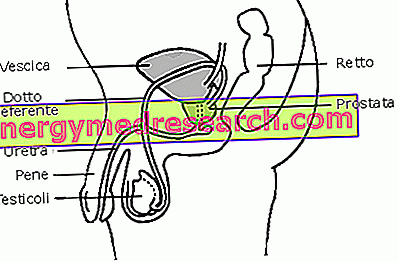Related articles: Hemochromatosis
Definition
Primary hemochromatosis is a genetic metabolic pathology, characterized by an excessive accumulation of iron in the body. The generally systemic process can cause damage to tissues and to various organs, such as liver, pancreas, skin, gonads, pituitary glands, liver and heart.
The main cause of hemochromatosis is a mutation (transmitted with an autosomal recessive modality) of the HFE gene, located on chromosome 6. Usually, the symptoms are more pronounced in men than in women (especially before menopause).
Most common symptoms and signs *
- Amenorrhea
- Arrhythmia
- Ascites
- Asthenia
- Testicular atrophy
- Decline in sexual desire
- Cardiomegaly
- Skin discoloration
- Erectile dysfunction
- Abdominal pain
- Articolar pains
- Hepatomegaly
- Glycosuria
- Hyperglycemia
- Jaundice
- Lethargy
- Weight loss
- Acquagenic Itching
- Drowsiness
- splenomegaly
Further indications
The symptoms of hemochromatosis can go unnoticed until the amount of iron accumulated in the body does not exceed 10g (as a rule, the total content of Fe is about 2.5 g in women and 3.5 g in men). The presentation of the disease, therefore, can be unspecific, insidious and slow.
The clinical consequences due to iron overload can include abdominal pain, weight loss, weakness and lethargy. In men, the initial symptoms may include hypogonadism and erectile dysfunction. Some patients have hypothyroidism, hyperpigmentation of the skin, joint pain, glucose intolerance or diabetes mellitus. The overt disease is characterized by liver cirrhosis with hepatomegaly, loss of libido, amenorrhea, splenomegaly, ascites, arrhythmias and jaundice.
Complications of hepatic involvement and cardiomyopathy with heart failure are the most common causes of death.
Diagnosis is based on serum ferritin dosage and genetic analysis (HFE gene mutations).
Treatment generally involves periodic phlebotomy and administration of iron chelators.



